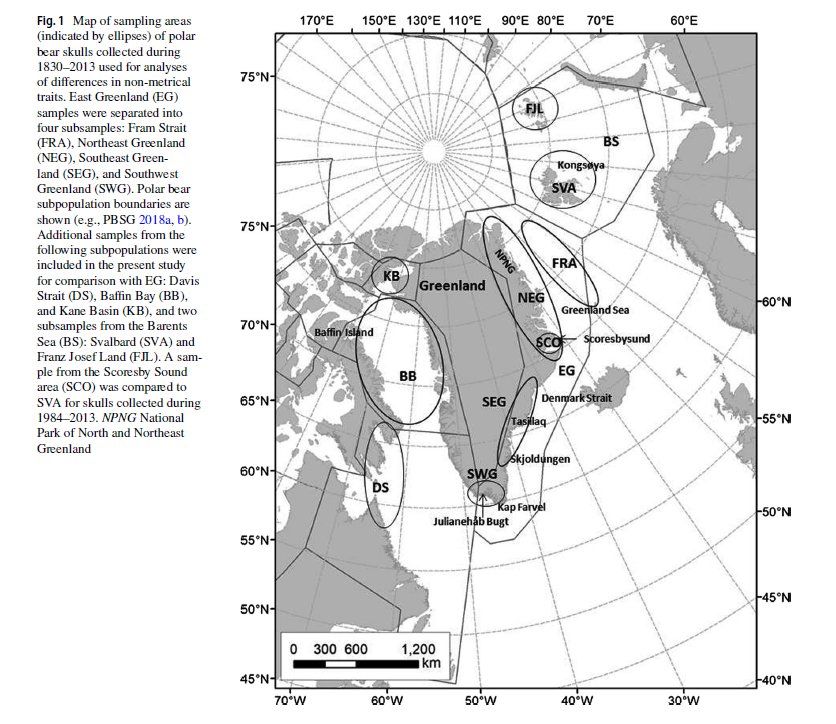Variation in non‑metrical skull traits of polar bears (Ursus maritimus) and relationships across East Greenland and adjacent subpopulations (1830–2013)
New publication by Øystein Wiig, Poul Henrichsen, Torstein Sjøvold, Erik W. Born, Kristin L. Laidre, Rune Dietz, Christian Sonne, Jon Aars.

Abstract:
Knowledge of subpopulation identity including substructure is a prerequisite for sound management of polar bears (Ursus maritimus). It is not known whether the present catch of polar bears in the East Greenland subpopulation (EG) is sustainable. We used the Mean Measure of Divergence (MMD) to examine geographical variation in non-metrical traits from 1414 polar bear (Ursus maritimus) skulls collected in East Greenland (EG), Svalbard (SVA), Franz Josef Land (FJL), Davis Strait (DS), Baffin Bay (BB), and Kane Basin (KB), between 1830 and 2013. We focused on East Greenland with the goal of examining substructuring in the subpopulation. We did not find significant differences among samples across four areas of the EG subpopulation (i.e., offshore Fram Strait, NE, SE, and SW Greenland) using data from 1830 to 1983. Our analyses did not lend support to substructuring. However, we draw our conclusions with caution because skulls were sampled over a long time period and had low power due to small sample sizes. Also, comparisons were limited to pre-1980s skulls. The decrease in sea ice in EG since the 1990s due to climate change may have led to substructuring not detected with MMD. This study contributes to the current efforts by Greenland authorities to quantify connectivity of polar bears between southeast and northeast Greenland which is important information for the evaluation of the sustainability of the catch of bears from the EG subpopulation.
Polar Biology. doi.org/10.1007/s00300-018-2435-x
